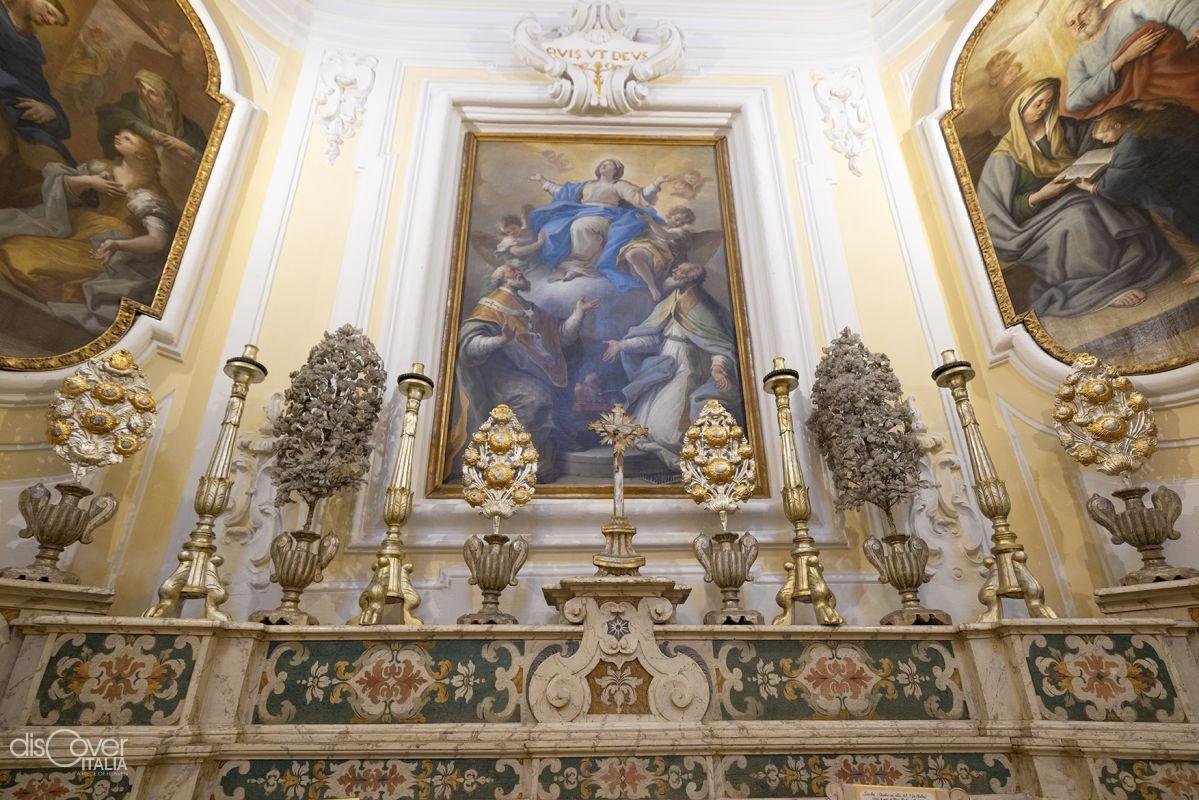At first visual impact, thanks to the whiteness of the facade, it appears as a hymn to simplicity, despite the architectural lines of clear Baroque origin.
A jewel whose inestimable value is fully understood only by crossing the large entrance door, immediately welcomed by the complex harmony created by the simultaneous presence of multiple elements of interest, which gradually draw attention to every part of the octagonal cross space fret, surmounted by a spectacular light-dispensing dome. Even if it is the floor/masterpiece that dominates the scene, from whatever perspective it is observed.
The monumental church of San Michele Arcangelo, in the historic center of Anacapri, is famous precisely for its artistic "riggiole" floor, precisely in that piazza San Nicola which recalls the pre-existence of a sacred building named after the Bari saint and partly incorporated into the the current structure, dating back to the period between 1698 and 1719. At that time, Mother Serafina Di Dio was the superior of the Teresian convent, near the church of San Nicola, and in proceeding with the restructuring of the monastery she also thought of building a new church. Which partially overlapped the existing one, of which stucco parts are still identifiable in the side entrance to the main portal. Domenico Antonio Vaccaro designed the new building, but other famous artists also lent their work to it, thanks to the economic contribution of important supporters, including the bishop of the time, Michele Gallo di Vandenejnde, who thus wanted to invest in the site of the his burial.
In the church there are seven chapels, dedicated to the Madonna and the GuardianAngels. All contain valuable works dated 1719 and mostly signed by Paolo De Matteis, as well as two paintings by Francesco Solimena. The beautiful altars with polychrome inlays are in wood, made by excellent local craftsmen perhaps waiting to replace them with others in marble. The beautiful "riggiole" flooring offers festoons of fruit and flowers.
In the chapel opposite the entrance, the main altar from 1761, in Carrara marble and semi-precious stones is the work of Agostino Chirola. There are exhibited a SanMichele Arcangelo by Nicola Malinconico, two paintings of Angels by Paolo DeMatteis, while the Nativity and the Prayer in the garden are by Giacomo del Po. The floor of the apse bears an extraordinary decoration perhaps based on a design by Giuseppe Sanmartino.
The main altar was donated by the prince of San Nicandro, as the most amazing work of all: the floor made up of hundreds of finely decorated majolica tiles, which represents Adam and Eve expelled from the earthly Paradise and is signed by the master Leonardo Chiaiese, whose there is the signature in a corner of the work. Which can be admired in all its details, in the variety of animals, in the harmony of colors by following the wooden walkway that discreetly runs along the floor along its entire perimeter. But to better admire the work, it can be observed in its entirety from above, going up a spiral staircase located in the room on the side of the church up to the space where the precious painted wooden organ is located.
In the room on the mezzanine floor as in the one below with the staircase, various pieces attributable to the congregation of the Immaculate Conception are exhibited. This played an important role in the history of the Anacapri church, which was donated to it by King Ferdinand I of Bourbon, after he had reopened the church for worship, transformed into an ammunition depot during the English occupation in 1808. Fortunately, the vicissitudes of that period did not cause damage to the precious eighteenth-century majolica floor



Comments powered by CComment